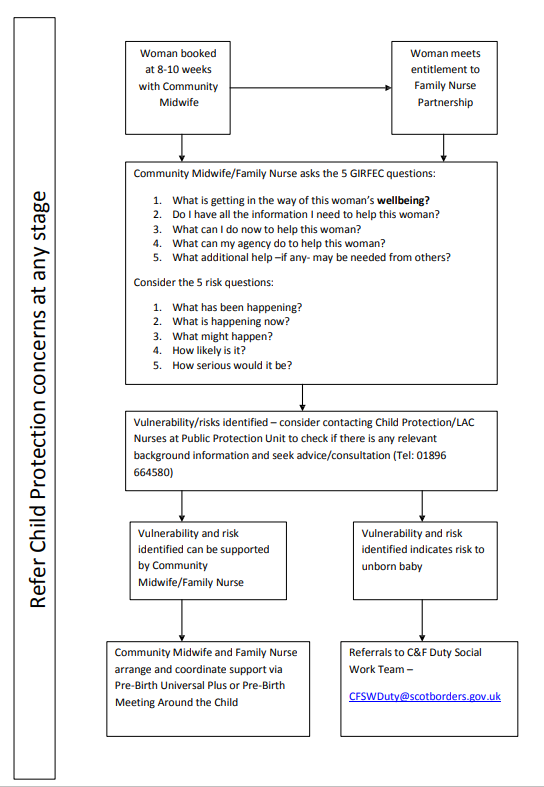The Children (Scotland) Act 1995 defines a child as being “in need” because:
- he/she is unlikely to achieve or maintain, or to have the opportunity of achieving or maintaining, a reasonable standard of health or development;
- his/her health or development is likely to be significantly impaired, or further impaired, if services are not provided;
- he/she is disabled; or
- he/she is affected adversely by the disability of any other person in his family.
The categories identified below should guide practitioner thinking in relation to the need for support but is not an exhaustive list. As this policy refers to the Unborn Child consideration should be given to the possibility that the child will be in need after birth. A child in need could, using this definition, be a child of a household where one or more of the following are a feature:
- Poor economic, material and social circumstances prevail
- Domestic violence
- Previous child care/ child protection issues
- Drug and alcohol use of adults in the home
- Parental/carer mental health problems
- Learning disabilities of parent/caregiver
- Physical disabilities of parent/caregiver
- Young mother under the age of 16-years
- Families with many changes of address and relationships
- Homeless
Using the Getting It Right For Every Child questions and Risk Questions will assist the midwife in their decision making re the pathway of support required (see Appendix 1).
Getting It Right For Every Child questions:
- What is getting in the way of this woman’s wellbeing?
- Do I have all the information I need to help this woman?
- What can I do now to help this woman?
- What can my agency do to help this woman?
- What additional help - if any - may be needed from others?
Risk questions:
- What has been happening?
- What is happening now?
- What might happen?
- How likely is it?
- How serious would it be?
Where vulnerability/risks are identified consider contacting the Child Protection/Looked After Children’s Nurses at the Public Protection Unit for advice/consultation and to check if there is any relevant background information about the family.
Where vulnerability and the need for support is identified the ‘Supporting Families Pre-Birth Pathway’ should be followed (see Appendix 1).



